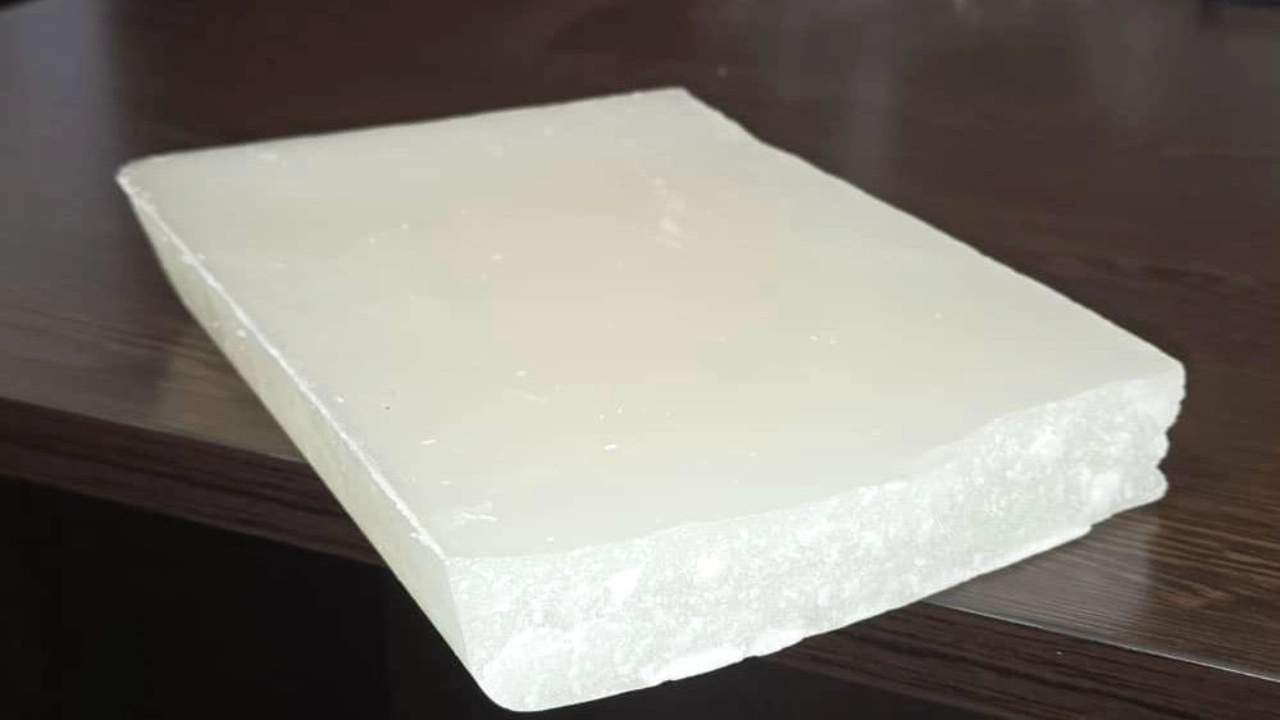Semi Refined Paraffin Wax 3-5% Supplier From Turkey and UAE

Table of Content
- Decriptions of Semi Refined Paraffin Wax 3-5%
- What is Semi Refined Paraffin Wax 3-5%? Technical Fundamentals
- Core Industrial Applications: Where 3-5% Wax Outperforms
- Why Manufacturers Choose Our Semi Refined Paraffin Wax 3-5% Supply
- Shelf Life, Expiry & Optimal Storage Conditions
- Packaging & Delivery: Engineered for Industrial Scale
- Partner with the Industrial Wax Leader
- Analysis of semi refined petroleum wax 3-5% oil content
Decriptions of Semi Refined Paraffin Wax 3-5%
As a specialized semi refined paraffin wax 3-5% supplier, we engineer cost-effective wax solutions for industries where flexibility and high-volume consumption matter more than premium hardness. Unlike our 1-2% grade designed for structural candle applications, this 3-5% oil content wax delivers superior workability and emulsion stability—making it the go-to choice for tire manufacturers, polish formulators, and industrial coating operations worldwide. When your production line demands a petroleum wax that bends without breaking (literally), our industrial wax distributor network ensures a consistent supply with the technical precision your processes require.
What is Semi Refined Paraffin Wax 3-5%? Technical Fundamentals
Semi refined paraffin wax 3-5% is a partially refined petroleum wax with deliberately higher oil content that gives it enhanced pliability and lower melting characteristics. This isn’t a quality compromise—it’s a performance specification engineered for applications where wax must blend seamlessly with oils, resins, and rubber compounds. As a trusted wax supplier to heavy industry, we source our feedstock from premium slack wax to ensure batch-to-batch consistency.
Key Specifications for Industrial Applications
Light Grade (3-4% Oil Content):
-
Melting Point: 56-58°C
-
Penetration: 18-22 dmm
-
Ideal for: Lubricants, wood panel sizing, cooler climate operations
Heavy Grade (4-5% Oil Content):
-
Melting Point: 60-62°C
-
Penetration: 20-24 dmm
-
Ideal for: Tire manufacturing, hot climate polish production, rubber compounding
Both grades maintain a white to light cream appearance and are completely odorless—critical for both industrial worker safety and final product quality control.
Core Industrial Applications: Where 3-5% Wax Outperforms
Rubber & Tire Manufacturing
This is where semi refined paraffin wax 3-5% earns its keep. Tire manufacturers consume it by the ton as a processing aid and bloom agent. The 4-5% oil content allows the wax to migrate to the tire surface during vulcanization, forming a protective barrier against ozone cracking. Unlike fully refined wax that can cause scorching, our rubber wax supplier grade integrates smoothly with SBR and natural rubber compounds through our chemical distribution network.
Real Impact: A major tire producer reduced scorch time by 12% after switching to our heavy-grade semi refined paraffin wax 3-5% with a 62°C melting point.
Polish & Coating Emulsions
For floor polishes and wood finishes, semi refined paraffin wax 3-5% creates stable oil-in-water emulsions without excessive surfactants. Our polish wax distributor clients report 20% better gloss retention because the wax forms a more uniform film. The 3.5% oil content grade is the sweet spot for carnauba-based floor polishes.
Lubricants & Greases
In wire drawing compounds, this petroleum wax acts as both a thickener and a lubricity enhancer. The 3-4% oil content ensures products remain pliable at low temperatures while maintaining structure at operating heat. Our lubricant wax supplier’s technical sheets include compatibility matrices for calcium and lithium thickeners.
Particleboard Manufacturing
Unlike surface coatings, semi refined paraffin wax 3-5% is added directly into wood fiber slurry. The higher oil content allows better dispersion, reducing water absorption by 30%. This internal sizing is critical for bathroom cabinetry production in humid markets.
Why Manufacturers Choose Our Semi Refined Paraffin Wax 3-5% Supply
Emulsion Stability Guarantee
Unlike lower-oil waxes that separate, Paraffin Wax 3-5% forms stable dispersions for 180+ days. As a technical paraffin wax distributor, we provide particle size distribution data and 90-day stability tests for your specific formulation. This is why major Polish manufacturers specify our grade exclusively.
Cost-Per-Unit Optimization
For high-volume users consuming 50+ tons monthly, the price difference between 1-2% and 3-5% wax is significant. Our industrial wax supplier pricing includes volume rebates and consignment inventory options, reducing your working capital by up to 30%.
Custom Oil Content Blending
Need exactly 3.7% for a proprietary rubber compound? Our wax supplier lab can blend to ±0.1% tolerance. This service is included for orders above 20 tons, making us a true procurement partner rather than just a vendor.
Shelf Life, Expiry & Optimal Storage Conditions
How Long Does Semi Refined Paraffin Wax 3-5% Last?
The standard shelf life for Paraffin Wax 3-5% is 24 months from the date of manufacture when stored in original, sealed packaging. This is shorter than the 36-month shelf life of 1-2% wax due to the higher oil content’s increased oxidation risk.
Factors That Accelerate Expiry
Several conditions can shorten your wax’s usable life:
-
Temperatures above 30°C: Accelerates oil migration to the surface
-
High humidity (>70%): Degrades carton integrity, allowing contamination
-
Direct sunlight: UV radiation breaks down the wax structure over time
-
Poor ventilation: Trapped heat creates microclimates that soften slabs
Visual Indicators of Expired or Degraded Wax
Check your semi refined paraffin wax 3-5% inventory monthly for these warning signs:
-
Oil staining on carton exterior: Indicates breach of inner nylon wrap
-
Surface darkening: White wax turning yellow signals oxidation
-
Excessive softness: Slabs that bend easily at room temperature have lost structure
-
Rancid odor: Rare but indicates severe oil degradation—do not use
Optimal Storage Conditions to Maximize Shelf Life
Follow these wax supplier recommendations to achieve the full 24-month shelf life:
-
Temperature: Keep storage area between 15-25°C (59-77°F)
-
Humidity: Maintain relative humidity below 60%
-
Stack Height: Maximum 4 cartons high to prevent compression oil bleed
-
Pallet Liners: Place cardboard or plastic sheets under pallets to catch any seepage
-
Rotation: Use First-In-First-Out (FIFO) inventory management
Pro Tip from Our Technical Team: If you must store in warmer conditions (up to 35°C), wrap pallets in reflective thermal blankets to reduce temperature fluctuations. This simple step can extend functional shelf life by 3-6 months.
Can You Use Wax After the 24-Month Mark?
While Paraffin Wax 3-5% doesn’t “expire” like food, performance degrades after 24 months:
-
24-30 months: Test a sample—if no oil staining and penetration is within spec, it’s likely still usable
-
30+ months: Not recommended for critical applications like tire manufacturing, where consistency is paramount
-
Expired inventory options: We offer buy-back programs for unused stock within 30 months of manufacture
Safety Considerations with Aged Product
Degraded wax poses minimal health risk but can cause production issues:
-
Slip hazards: Oil migration creates slippery floors
-
Equipment contamination: Oxidized wax can clog filters in automated systems
-
Product defects: Inconsistent melt behavior leads to quality variations
Our industrial wax distributor team recommends quarterly warehouse audits to identify aging stock before it becomes a problem.
Packaging & Delivery: Engineered for Industrial Scale
Standard Industrial Packaging from Your Wax Supplier
-
Slab Size: 5kg slabs (easy to feed into melt kettles)
-
Inner Wrap: Heavy-duty nylon film with oil-resistant coating
-
Outer Carton: 25kg per carton, 27 cartons per 20ft container = 27 metric tons
-
Pallet Configuration: Stretch-wrapped wooden pallets, 40 cartons per pallet
Critical Note: We use oil-resistant cartons with internal polyethylene coating because Industrial Paraffin Wax 3-5% is more prone to oil migration than lower-oil grades.
Bulk Solutions for Continuous Operations
For tire plants running 24/7, we offer:
-
1,000kg FIBC bags with oil-proof liners
-
Molten delivery in isotanks at 80°C
-
Just-in-time warehousing (vendor-managed inventory)
Partner with the Industrial Wax Leader
For semi refined paraffin wax 3-5% that performs in demanding manufacturing environments, trust our proven chemical distribution network. We deliver technical expertise, cost optimization, and supply chain reliability that generic wax traders cannot match.
Request an emulsion formulation consultation to maximize performance while minimizing costs.
Contact our industrial sales team for a competitive quote including freight optimization and on-site technical support. (Contact Us).
Analysis of semi refined petroleum wax 3-5% oil content
(Light Grade)
| Specification | Test method | Results |
| Oil content | ASTM D-721 | 4.50% |
| Melting point | ASTM D-87-09 | 60 ˚C |
| SP.gr@60 C | ASTM D-2726 | 0.83 gr/cm3 |
| Color | ASTM D-1500 | Little yellowish |
| Flash point | ASTM D-93-13 | 250 ˚C |
Analysis of Semi Refined Paraffin Wax 3-5% Oil Content (Light Grade)
(Heavy Grade)
| Specification | Test method | Results |
| Oil content | ASTM D-721 | 4.10% |
| Melting point | ASTM D-87-09 | 62 ˚C |
| SP.gr@60 C | ASTM D-2726 | 0.83 gr/cm3 |
| Color | ASTM D-1500 | White |
| Flash point | ASTM D-93-13 | 250 ˚C |
Analysis of Semi Refined Paraffin Wax 3-5% Oil Content (Heavy Grade)


